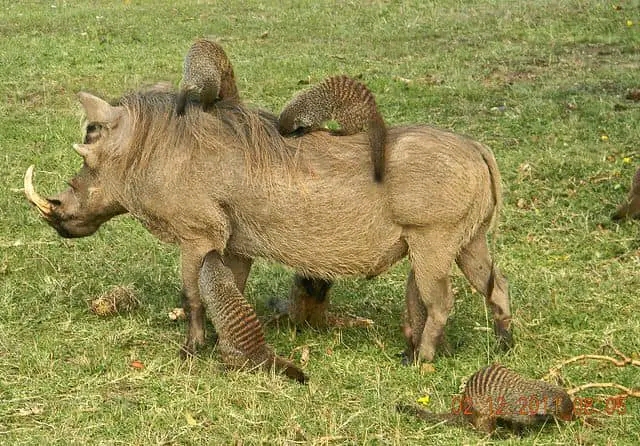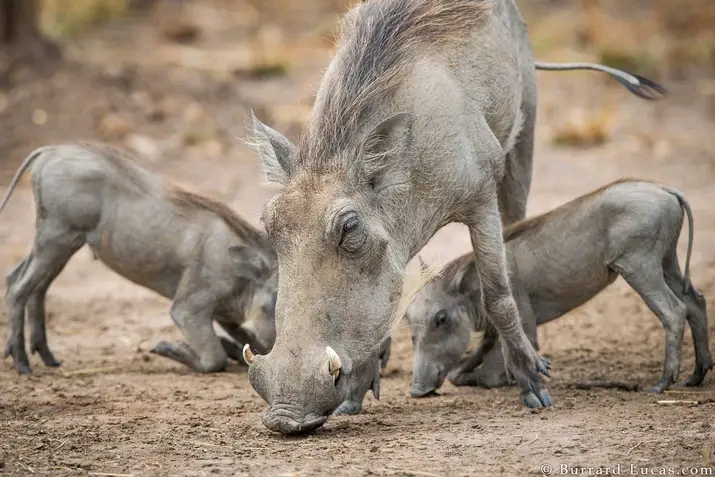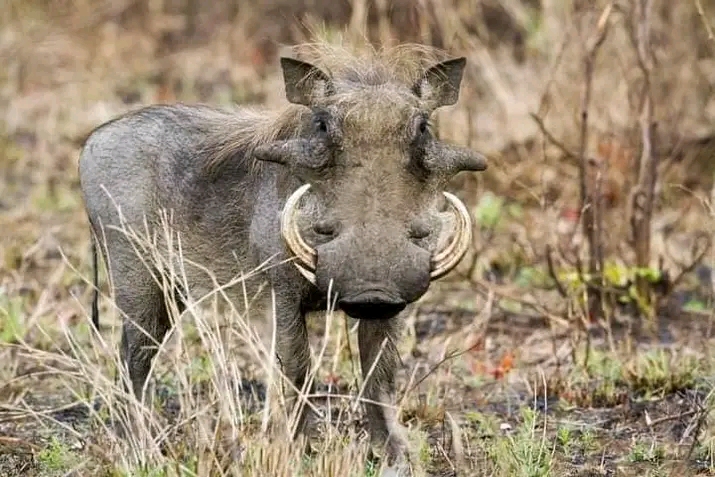THE THUGS AT WAR
THE THUGS AT WAR!
In recent days, about three to five days ago, there is this particular species of animals that have been trending lol. It's been very surprising because they do not have a social media page or anything of that nature, howbeit, they trended. They trended on Facebook and even on Twitter (now X) and trust Nigerians, they were given so many names, like The Turbo Engine (due to their speed and/or acceleration), The touts (because they are literally thorns on the flesh of the big cats).. trust me they are very fascinating and entertaining.
I know at this point, you're already very eager to know the name of this fascinating animal, lol.. it's the WARTHOG!
Now, the question is...how do they get this name? Is it because they behave like THUGS AT WAR?.. Follow me keenly and I will tell you.
This is the fact.. Warthogs are called Warthogs due to their physical appearance and characteristics. The name "Warthog" comes from the combination of "wart" and "hog".
"Wart" refers to the fleshy growths or protrusions on their faces, which resemble warts. These growths are actually thickened skin areas that help protect their faces during fights and digs. They actually dig holes where they hide after making troubles, lol.
"Hog" refers to their pig-like appearance and habits and it's a known fact that anything piggy is hoggy - remember Hog Cholera? Warthogs belong to the pig family (Suidae) and have a stout body, short legs, and a flat, rounded snout.
So, the name "Warthog" is a descriptive term that highlights their distinctive facial features and pig-like characteristics.
Furthermore, I would love to tell you more about these fascinating specie of animals.
Read on to learn a thing or two about them.
Behavior and Diet
They look like they're carnivores right?.. but they actually arent.
Warthogs are diurnal animals, spending most of their time foraging for food and socializing. They are omnivores, feeding on grasses, fruits, vegetables, and insects. In the wet season, warthogs tend to eat more grasses and leaves, while in the dry season, they rely on underground plant material and roots. They are also known to raid crops and gardens, leading to conflicts with humans. Lol.. very fascinating but troublesome.
Social Structure and Reproduction
Warthogs are social animals that live in small groups called SOUNDERS (make sure you do not forget this). These sounders typically consist of females and their young, while males tend to live solitary lives (Males and their wahala, what exactly are they tryna prove) or form bachelor groups. Female warthogs give birth to 2-4 piglets after a gestation period of approximately 5 months. The piglets are born with their eyes open and are able to walk within the first hour of birth, isn't this just interesting?
Conservation Status
Warthogs are listed as Least Concern on the IUCN Red List, but their populations are declining in some areas due to habitat loss, fragmentation, and hunting. They are also vulnerable to diseases such as brucellosis and pseudorabies. I am really concerned about this.. I can't just imagine them go into extinction. I would be too pained.
There are also very interesting facts about these fascinating animals, lol.
Warthogs are skilled diggers and use their tusks and powerful bodies to excavate burrows, which can extend up to 2 meters (6.6 feet) underground.
They are fast runners and can reach speeds of up to 50 km/h (31 mph). In fact, this is what brought them into limelight as I have seen videos where they just go taunt a lioness, tiger or any of the big cats and then they zoom off. Its not even as if they are faster (for example a Tiger's maximum speed is 58km/h and a lion's is above 70km/h) than these big cats but guy they have stamina and they take off in the twinkle of an eye.
Warthogs have poor eyesight but have a keen sense of smell and hearing. I don't know how they have been surviving with very poor eyesight.
They are known for their distinctive "grunt" call, which can be heard over long distances.
Warthogs are fascinating creatures that play a vital role in their ecosystems. Their unique appearance, social behavior, and adaptability make them a popular sight in zoos and wildlife reserves. However, their populations are declining in some areas due to habitat loss and hunting. It is essential to conserve and protect these incredible animals and their habitats to ensure their survival for generations to come.
If you have watched "The Lion King", I am very sure you would resonate very well with these very fascinating animals.
Indeed, they are the fascinating creatures of the African Savannah.
Reference - Nowak, R. M. (1999). Walker's Mammals of the World. Johns Hopkins University Press.
In recent days, about three to five days ago, there is this particular species of animals that have been trending lol. It's been very surprising because they do not have a social media page or anything of that nature, howbeit, they trended. They trended on Facebook and even on Twitter (now X) and trust Nigerians, they were given so many names, like The Turbo Engine (due to their speed and/or acceleration), The touts (because they are literally thorns on the flesh of the big cats).. trust me they are very fascinating and entertaining.
I know at this point, you're already very eager to know the name of this fascinating animal, lol.. it's the WARTHOG!
Now, the question is...how do they get this name? Is it because they behave like THUGS AT WAR?.. Follow me keenly and I will tell you.
This is the fact.. Warthogs are called Warthogs due to their physical appearance and characteristics. The name "Warthog" comes from the combination of "wart" and "hog".
"Wart" refers to the fleshy growths or protrusions on their faces, which resemble warts. These growths are actually thickened skin areas that help protect their faces during fights and digs. They actually dig holes where they hide after making troubles, lol.
"Hog" refers to their pig-like appearance and habits and it's a known fact that anything piggy is hoggy - remember Hog Cholera? Warthogs belong to the pig family (Suidae) and have a stout body, short legs, and a flat, rounded snout.
So, the name "Warthog" is a descriptive term that highlights their distinctive facial features and pig-like characteristics.
Furthermore, I would love to tell you more about these fascinating specie of animals.
Read on to learn a thing or two about them.
Behavior and Diet
They look like they're carnivores right?.. but they actually arent.
Warthogs are diurnal animals, spending most of their time foraging for food and socializing. They are omnivores, feeding on grasses, fruits, vegetables, and insects. In the wet season, warthogs tend to eat more grasses and leaves, while in the dry season, they rely on underground plant material and roots. They are also known to raid crops and gardens, leading to conflicts with humans. Lol.. very fascinating but troublesome.
Social Structure and Reproduction
Warthogs are social animals that live in small groups called SOUNDERS (make sure you do not forget this). These sounders typically consist of females and their young, while males tend to live solitary lives (Males and their wahala, what exactly are they tryna prove) or form bachelor groups. Female warthogs give birth to 2-4 piglets after a gestation period of approximately 5 months. The piglets are born with their eyes open and are able to walk within the first hour of birth, isn't this just interesting?
Conservation Status
Warthogs are listed as Least Concern on the IUCN Red List, but their populations are declining in some areas due to habitat loss, fragmentation, and hunting. They are also vulnerable to diseases such as brucellosis and pseudorabies. I am really concerned about this.. I can't just imagine them go into extinction. I would be too pained.
There are also very interesting facts about these fascinating animals, lol.
Warthogs are skilled diggers and use their tusks and powerful bodies to excavate burrows, which can extend up to 2 meters (6.6 feet) underground.
They are fast runners and can reach speeds of up to 50 km/h (31 mph). In fact, this is what brought them into limelight as I have seen videos where they just go taunt a lioness, tiger or any of the big cats and then they zoom off. Its not even as if they are faster (for example a Tiger's maximum speed is 58km/h and a lion's is above 70km/h) than these big cats but guy they have stamina and they take off in the twinkle of an eye.
Warthogs have poor eyesight but have a keen sense of smell and hearing. I don't know how they have been surviving with very poor eyesight.
They are known for their distinctive "grunt" call, which can be heard over long distances.
Warthogs are fascinating creatures that play a vital role in their ecosystems. Their unique appearance, social behavior, and adaptability make them a popular sight in zoos and wildlife reserves. However, their populations are declining in some areas due to habitat loss and hunting. It is essential to conserve and protect these incredible animals and their habitats to ensure their survival for generations to come.
If you have watched "The Lion King", I am very sure you would resonate very well with these very fascinating animals.
Indeed, they are the fascinating creatures of the African Savannah.
Reference - Nowak, R. M. (1999). Walker's Mammals of the World. Johns Hopkins University Press.




